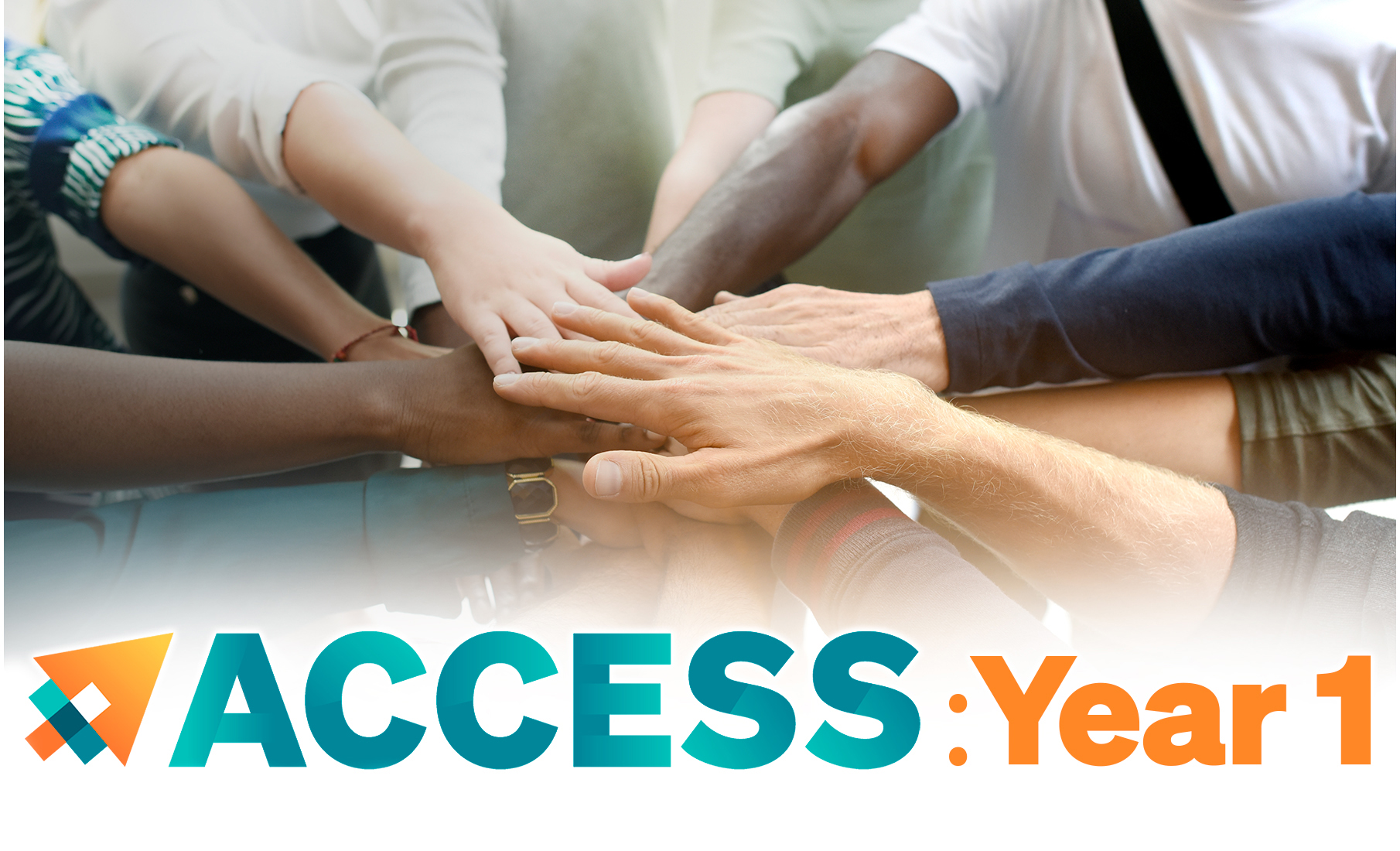ACCESS is a complex operation, allocating hundreds of thousands of hours on the cyberinfrastructure systems within the ACCESS portfolio each year. It takes a dedicated team of experts to make sure everything runs smoothly. In its first year since launching last September, the teams worked hard to help researchers maximize the potential of their research. It also built communities, assisted students, supported resource providers and much more. Here are just a few of the highlights prepared by the ACCESS teams in year one of the program.
Allocations
The first year of ACCESS Allocations was a busy one, with nearly 1,200 project requests received and processed as the team began pursuing its vision of making access to the NSF-funded national cyberinfrastructure accessible and equitable for all researchers no matter the size of the institution, the scale of the planned work, the discipline of the research or the demographics of the requestor.
Following an initial scramble to prepare to launch the ACCESS program on September 1, 2022, the ACCESS Allocations team rolled out a new experience for U.S.-based researchers and educators that included not only a brand new portal experience but also new allocation policies designed to create an open, inviting and democratized allocations marketplace. The policies defined an efficient, scalable and simplified request-and-review framework supported by a robust, decentralized and flexible software platform – the eXtensible Resource Allocation Service (XRAS).

Number of active individuals
10,962
Number of active institutions
741
Number of volunteer allocation reviewers
99
Support
Positioning ACCESS Support for evolution and growth has been a key focus during the first year of the project. Although this team’s primary goal was to ensure the user experience was not negatively impacted during the XSEDE transition, its longer-term goals were focused on the future, ensuring that the new services being implemented would be transformative, easy to navigate, access and understand. To ensure success, the team worked closely with other service teams to navigate the ticketing system, integrating the knowledge base, identity and access management, incorporating support services with the allocations process, and integrating metrics. They also worked with the Resource Providers (RPs) to develop sound processes, such as routing tickets and writing and posting documentation, to ensure the user needs would be served. The Support team connected with community groups and provided information on ACCESS’s tiered support model to help researchers and cyberinfrastructure professionals discover the variety of resources available to them.
- OnDemand was installed at 7 of 12 sites, with active in-process discussions at 2 additional sites
- 43 CCEP awards were made, with 89 total applications received. These have been from 46 distinct academic institutions, with 8 of them minority serving
- The ACCESS Support Portal averages approximately 3,000 unique users per month, with between 8,500 and 10,500 page views per month

Operations
During the first year of ACCESS, the Operations team celebrated many successes. The team lost no time ramping up for the September 1, 2022 go-live date. During the first four months of the project, the cybersecurity team built and deployed a comprehensive identity and access management infrastructure to support 100,000+ user accounts and established active cybersecurity vulnerability scanning. The networking team implemented a seamless network migration path for Resource Providers (RPs) to use CONECTnet. The operational support team seamlessly migrated key enterprise services, implemented an interim ACCESS ticketing system and co-led the effort to create integration roadmaps to allow for the seamless transition of all XSEDE-allocated resources to ACCESS with zero interruptions to the user community.

- Successful transition of all XSEDE-allocated resources to ACCESS with zero interruptions to the user community
- Built and deployed a comprehensive identity and access management infrastructure to support 100,000+ user accounts
- Implemented a seamless network migration path for RPs to use CONECTnet
- Successfully recruited a diverse group of students (including over 66% female) for the inaugural Student Training & Engagement Program (STEP) and delivered a successful learning and internship experience
Metrics
The first year of ACCESS Monitoring and Measurement Service (MMS) kept the Metrics team busy both with the transition from a monitoring service that was independent of XSEDE, NSF’s program prior to ACCESS, to one that is now fully integrated within the ACCESS program as well as the ongoing development of XDMoD and Open XDMoD.
A critical goal of the transition was to minimize disruption to the CI research community so that researchers could seamlessly utilize the CI resources within the ACCESS environment from day one of the go-live. Demonstrating the effectiveness of the ACCESS transition is where the Metrics team, with its extensive repository of usage data for XSEDE, comes in. To demonstrate that there was little, if any, change in the use of CI resources by researchers, ACCESS Metrics leveraged XDMoD to compare system usage and job throughput between XSEDE and ACCESS. The analysis included metrics such as the number of jobs run, number of service units consumed, breakdowns of usage by resource, type of user and field of science.
Number of jobs run
17,106,097
Number of active users
9,653
Number of CPU-hours
3,054,923,444

ACCESS Coordination Office
With the rest of our ACCESS co-awardees, the ACCESS Coordination Office (ACO) spent the early part of the first program year standing up the structures to help facilitate governance, communications, community building and engagement, and evaluation across the program. These include many behind-the-scenes items, from establishing emails for all staff to setting up wiki spaces and Google drives for teams to work within. These early efforts helped ensure a smooth transition from the NSF’s XSEDE program for staff and the greater research community. Among the most important orders of business was to establish program governance.

Social media impressions
84,856
Total social media posts
350
Published stories on the website
38
The ACCESS Advance – New Subscribers
11,575
The ACCESS Advance – Total subscribers
56,326


